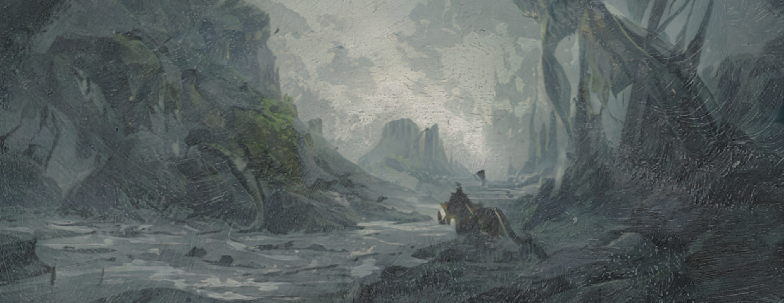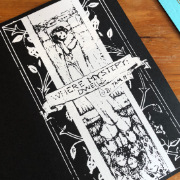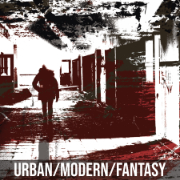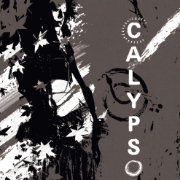Dispensing with Attributes

filed under mechanics and soloing on 14 Oct 2016 tagged solo, house rules, scarlet heroes, traits, solo gaming, and mechanics
I’ve said it before: I don’t really like attributes. I’m interested in making characters and playing to see what happens to them, and attributes just seem to get in the way of that.
Never fails – I have a great character backstory, a cool climbing mechanic I want to try, I can practically see the master thief in my mind, and I roll up middling-to-fair barbarian stats instead. I’m playing solo, I can scrap it and start over, but then why don’t I just make the stats up instead of maintaining the fiction that I’m actually rolling them up? Because then it’s not playing by the rules. And then I almost always get annoyed and just fudge it.
For me, even when solo gaming, rules have to be present and followed, or I’m just telling a story, not playing a game (and believe me, I end up in that mode often enough as it is). Even if “rules” just means that I set personal rules on how often I ask the oracle for story direction. Don’t get me wrong, I like making up a full character, it’s just that it’s always so hard to work with randomly rolled attributes. And they’re so broad – what if my character is a pretty normal guy, no genius, but has a great memory for trivia? Or fairly normal as far as getting colds and jogging goes, but lousy at marathons?
Here’s the functions attributes serve (as far as I can tell).
- To give a baseline of what your character is like, physically and mentally. Are they smart, dumb, strong, weak?
- Generally combined with another aspect of the character (skills) to see if they accomplish something of value.
- Almost always winnowed down to a much smaller number between -3 and +3.
- And finally, used as another way track injuries, separately from HP, like drains.
Nothing that seems like it HAS to be defined by an array of six items, rated from 3 to 18 with some random throws of the dice. So here’s what I’ve started using, almost entirely based on the idea, from Scarlet Heroes and Godbound, of ‘traits’ (with a lot of other indie rpgs I’ve read weighing in). It’s written with the assumption that you’re familiar with the Scarlet Heroes rules and probably won’t make much sense unless you’ve read Scarlet Heroes (which you should, it’s fantastic).
I should be upfront; this is primarily intended for solo play, which doesn’t have the same balance requirements group play does. And I’m sure I don’t need to say it, but like pretty much any other system it only works if you approach it in the context of defining a character, not in ‘winning’ a game. The rules assume you’re playing for your own enjoyment and to see what happens, and are geared towards facilitating that.
Basic Stuff
Instead of the usual one trait plus one attribute per roll, you can combine any two applicable positive value traits on a given roll. This will generally be one representing an attribute (or natural prowess) and one representing a trait (or skill), but any two you can justify can be applied. If you can’t find two that fit, just use one, or, worst case, none.
Traits can now have a negative value. When a roll is called for, add any (and all) negative value traits to the roll. But don’t worry too much about ‘positive’ versus ‘negative’ – if it comes up in play that a usually positive trait should be applied as a negative, just go ahead and do so for that roll as if it were a negative value, regardless of if it’s explicitly listed as such (and vice versa).
Traits may also be temporary (situational, representing magical or extremely appropriate items, or status effects); these are all added to or subtracted from any roll they apply to.
Generally, use the Scarlet Heroes default rules for overusing checks; if your hero is a Skilled Navigator, he likely never needs to roll to steer a boat. However, if negative traits negate some of that advantage, the hero might need to roll for a complex task he normally wouldn’t.
Cole has the traits phobia of water (-2) and has a hard time physically affecting the Real world (-2). He also has the trait athletic (+3). If he needs to swim out to save someone drowning, the roll will take a penalty of -4 since negatives are always applied, and he can use his athletic trait to add 3, for a net of -1 to the check. If he had a second applicable positive trait he could also apply that. If he had no penalties, say, he was sprinting across a field in pursuit of a killer, his athletic trait might have been enough for an automatic success – unless, of course, he had a temporary sprained ankle, 1 that was slowing him down!
See the section on “derived stats” for how combat works.
Setting Limits
Everything is now based around traits; each trait has a value, positive or negative, and a type, regular or temporary. At character creation, decide on the total number of assigned traits, a cap for each trait’s max value, and how many negative traits (which ‘buy’ positives at a 1 for 1 basis) are allowed. Standard would be 5 starting trait points, max of 3 in any one trait, and 0 negative traits. I tend to use 10 starting trait points, max of 5 in any one trait, and up to 5 negative points (giving me a net of 15 positive trait points).
There Are No Classes
Instead, assign your character an archetype trait, at 2 points, ala the thief in Scarlet Heroes (you can pretty much follow those rules verbatim). These two points are free and do not count out of your pool. It is also exempt from the per trait cap. The archetype should be a pithy but relatively broad statement of what your character is and does.
The archetype trait functions as a normal trait for rolling for tasks under its scope. It also serves as a class bonus if one is needed and as your primary attack bonus if no other trait is earmarked for this. If you want to stay more in line with standard Scarlet Heroes, then AB is the base combat trait’s value divided by 2.
Once per character, at any time (including character generation), you can choose a second archetype. This second archetype gains no free points but otherwise works exactly as the first does. It also provides two or three class abilities, if relevant. Use the better of the two archetypes when a class derived number is needed or to determine attack bonus if both seem relevant.
There Are No Attributes
By default, you get six additional trait points (one per default OSR attribute) and can take up to that number in negative trait points if you’d like. This is in addition to the standard starting trait points.
The assumption is these will be spent on things like “athletic”, “very good endurance”, or “has memorized an encyclopedia” – traits that are roughly analogous to normal attributes. But you don’t have to – any attribute (or aspect of an attribute) that’s not covered by a trait is considered to be no penalty and no bonus, ie, a 0 modifier. In fact, you can think of the trait points as normal stat modifiers – a hero with a strength 18 has a +3 modifier, for example.
Finally, you can combine things down to save space. For example, the trait “street smart but not book smart (+2/-2)” would be treated as a positive in the case of street smarts and a penalty if the hero needed to do research. It still counts towards your point totals, though, as if it were two traits, one positive and one negative. As noted above, it’s not too important a distinction, since traits will often flip from positive to negative situationally.
Regular Traits
Combine your trait points with any left over from the attributes section, then assign these just like the core book says to for humans. If you want to play a specific species, use the given examples or just put a trait down for it. For example, if you want to play a dwarf and have a pretty good idea what that entails (beards, beer, digging), put “Is a dwarf” down as a trait. Heck, use ‘is a dwarf’ as your archetype if you want to.
You can spend these trait points on your archetype if you want, too. I tend to put one of my regular trait points into archetype (for a starting rating of 3) if the character is a skilled archetype, but no more than that at first level. But if you want to, go for it, just be aware that the higher your archetype, the more likely you’ll tend to solve every problem with your archetype.
Poisoned! Temporary Trait Adjustments
If something would normally affect an attribute or aspect of your character in play, give the hero a temporary trait reflecting the penalty. “Poisoned and hallucinating, -2” for example, or “Freezing and soaking wet, -2”, or “Behind cover, 2” or “Wielding Excalibur, 2”. Remember to add or subtract any and all temporary traits on any roll they apply to, in addition to the normal two positives and all negatives.
If a temporary trait hits -5 (say, multiple failed saves agains a poison or cumulative effects), consider it the same as a relevant attribute hitting 0 and proceed as normal for that case. These temporary traits go away when they logically would – poison wears off when you make your save, freezing goes away when your hero gets warm, a broken limb heals up in six weeks or so, and so on.
For simplicity, only write these down if they’re not likely to change for a scene or two.
Derived Stats
Starting HP is 6, plus up to two applicable positive traits and minus any and all negative ones, to a minimum of 1. When you level up, use the same rule, except the base gained is 3, not 6.
AC is computed much the same way; base 9, subtract any two applicable positive traits and add all negative ones.
For combat, use the same procedure as any other roll; pick two positive traits (generally one representing your character’s skill in combat, often his archetype, the other his raw natural ability) to apply. All relevant negative traits apply as normal, as do any temporary traits.
The modifier for damage is situational. Use whichever of the two traits you applied to the combat roll best reflects the type of damage your hero is doing, usually whatever trait you selected to represent the natural ability factor.
Special Abilities
Decide how many special abilities are allowed per character (generally two or three), then choose that number from either a core SH class or from whatever class you’re using as inspiration.
You might choose the thief’s sneak attack and the cleric’s turn undead, for example. Or take magical spellcasting and cleric spellcasting together.
The only limit on this is that you must be able to justify it with your character’s backstory AND you have to be happy playing the resulting character. You also have to abide by any restrictions on the ability in the original class, for example, the magic user’s inability to cast in heavy armor or the thief’s inability to sneak attack wearing heavy armor.
Finally, choose a Fray die based on your archetype. If it comes up in play that you need a class, use the one your Fray die is based on.
Thief: skilled, expert, rogue, pilot
Cleric: well-rounded, fighter with a little magic, healer
Fighter: fighter, barbarian, soldier
Magic User: mage, psychic, wild talent
Advancement
At each level, you get two trait points to spend. These can be spent on any trait your character currently possesses or on a new trait to reflect a great deed, newly developed backstory element, or intense training. Any traits boosted must make sense in context, however, and must be supported by in game actions.
Whenever your character does something that would justify a trait changing on the spot, change the trait on the spot. Maybe he shakes off a phobia of the water long enough to help someone drowning, and loses that phobia trait entirely. Or maybe he takes an axe to the arm and loses ‘ambidextrous’. Or maybe he gives an impromptu speech on the eve of battle so amazing, so heartfelt and overwhelmingly moving, that he immediately gains a point of ‘master orator’.
Note that you don’t automatically gain back points if you lose some (or the other way around). It just is what it is – if your character loses a leg, he might lose his “graceful dancer, 2” trait and gain “peg leg, -1” instead. That’s just tough luck.
That’s a lot of words for something that’s actually pretty simple! And I’m sure not revolutionary or anything, but it satisfies my need not to have to agonize over where to put my lone 14!


